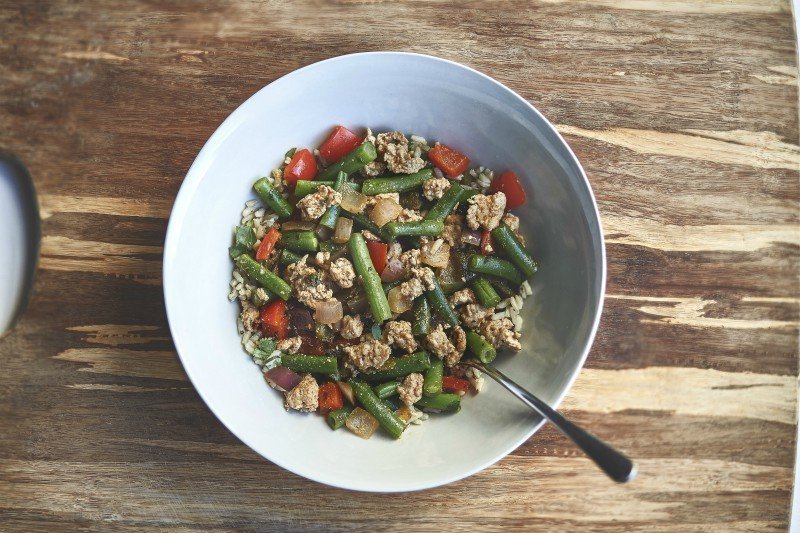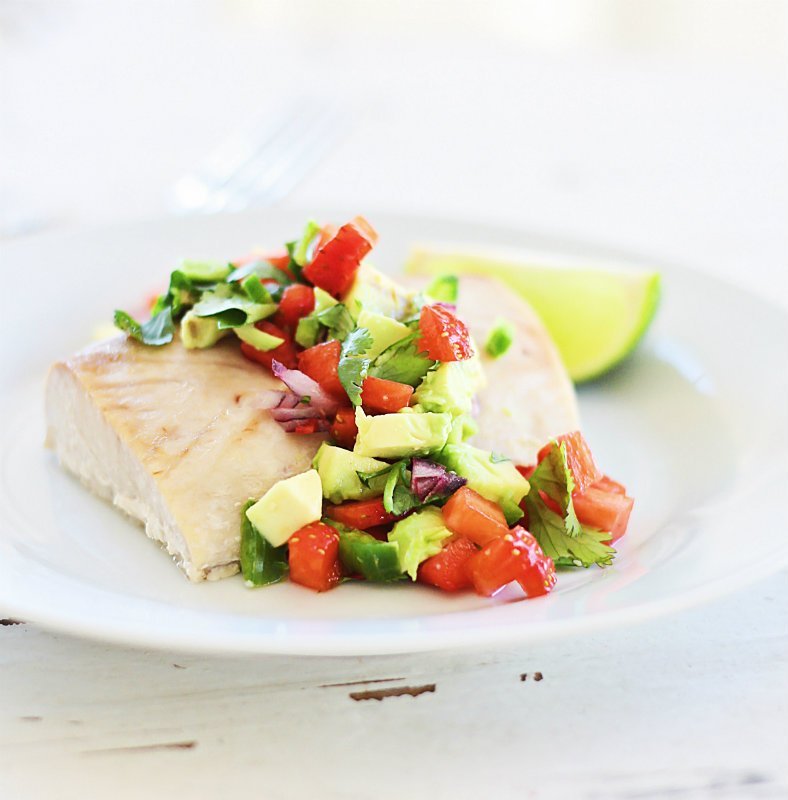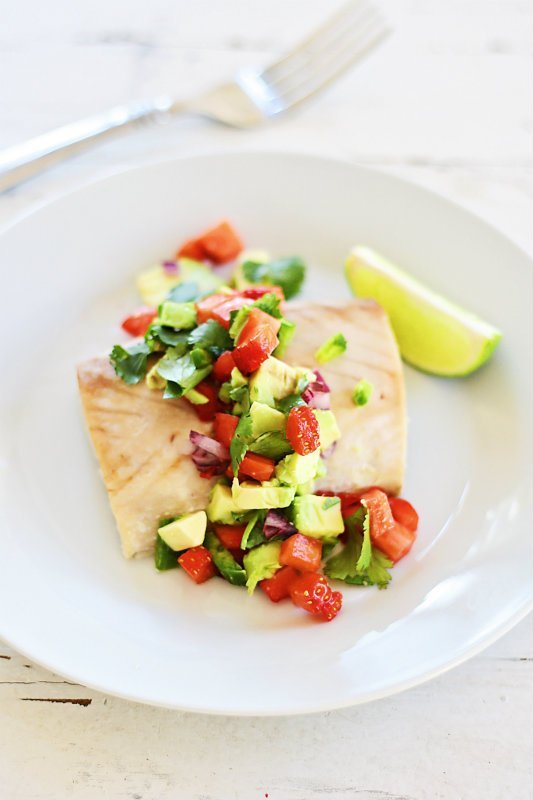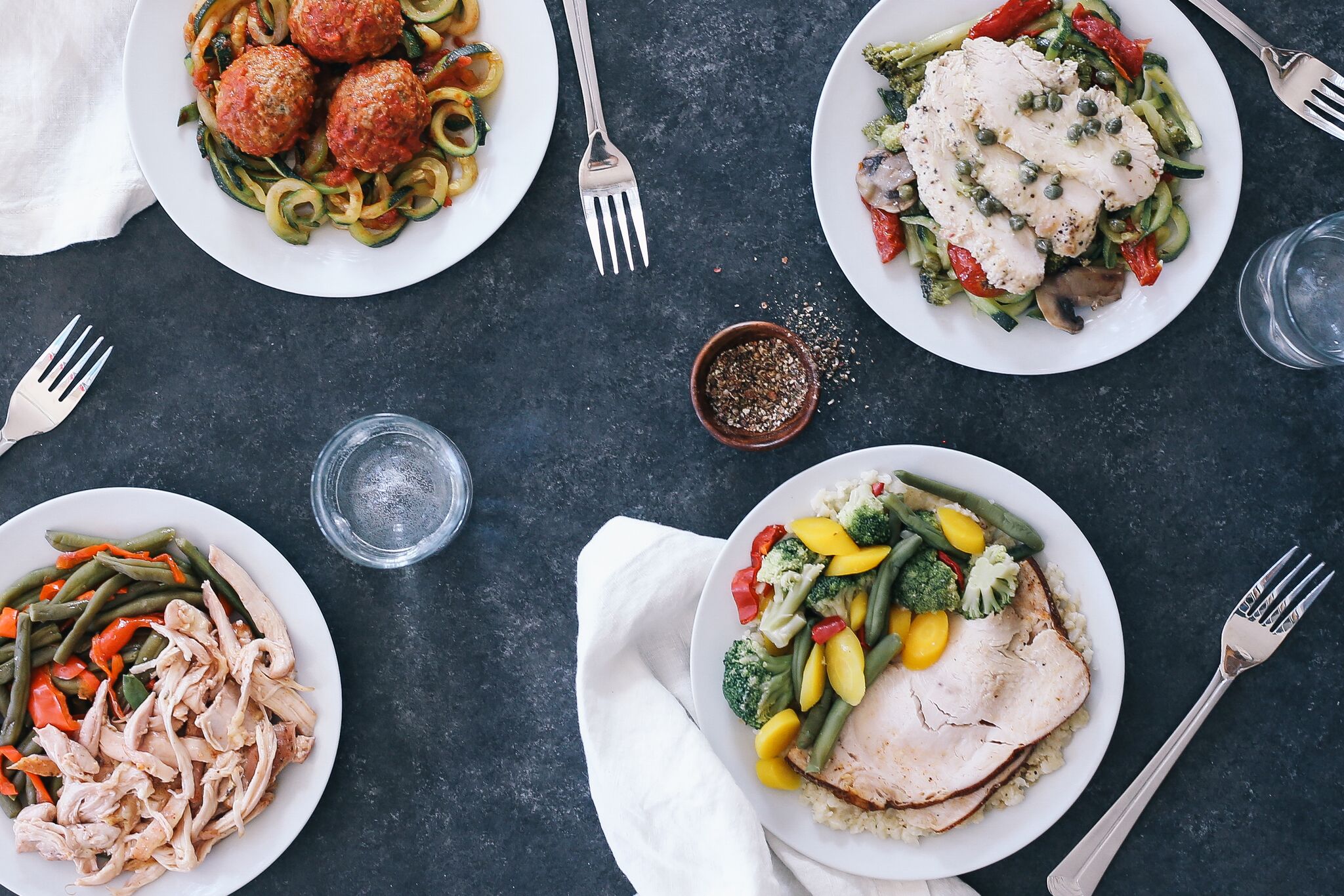Fasting. A word that often brings to mind deprivation and starvation. But what about Intermittent Fasting? Based on the feedback from the Facebook LIVE I did with Drew Manning last week, many of you are curious about this latest nutrition craze?it’s health benefits, long term sustainability, how it works with other diets, and about a million other questions. So let’s break it down a bit and uncover what exactly Intermittent Fasting is and isn’t and what it does and doesn’t do for our bodies!

Intermittent Fasting is an eating pattern alternating between periods of eating and periods of fasting?it is not a diet in itself with specific foods you can and cannot eat. It is, in it’s simplest form, an eating schedule, focusing on the when rather than the what. Intermittent Fasting can be combined with just about any other diet or meal plan or not combined with any dietary restrictions at all! Intermittent Fasting is all about meal timing rather than meal content.
**Get the recipe for this amazing Strawberry Salsa Mahi Mahi here.
One of the most common misconceptions about IF is that it is some sort of starvation diet. This couldn’t be further from the truth! While adhering to an IF eating schedule, you are eating the exact same amount of calories you would eat in a typical day on a regular eating plan, but with IF your window of eating is condensed, making your meals larger and more calorie packed than if you were to spread out your caloric intake over 6 small meals. This can actually aid in decreasing binge eating tendencies as it aids in helping you feel full and satisfied with your meals.
So how exactly does it work?! Simple. Like I said, instead of spreading out 5-6 small meals throughout an entire day, you’ll cut down to 2-3 larger meals during a period of time called your “eating window.” For example, if you choose to do a 16/8 fast, you would be fasting for 16 hours straight, then you would only eat during an 8-hour window. The flexibility of IF is amazing?you can literally choose whatever eating window works best for you whether it’s fasting all day and eating at night or vice versa! If you’re anything like me, breakfast is not a priority meal. I am so busy getting kids out the door, hopping on business calls, and sneaking in a workout, that I often forget to eat, and I rush to make up the calories I’ve missed. If that sounds like you too, you might do well on a 1 pm-9 pm eating window, leaving 9 pm – 1 pm as fasting hours.
Sounds kind of amazing, right?! By far the most incredible part of Intermittent Fasting are the health benefits. Here are some of the most important benefits of IF I’ve found:
- Most people eat all day long?from the moment they wake up until they go to bed. With Intermittent Fasting, you are no longer grazing all day. By only eating during your eating window, you are allowing your digestive system 12 to 16 hours of rest, which allows your body to process the nutrients you have consumed throughout the day more efficiently.
- According to the experts, Intermittent Fasting can lower your risk of diseases like cancer, dementia, diabetes, and heart disease.
- Intermittent Fasting can help control blood sugar levels.
- During your fasting period, your body will start using fat stores for energy. ?
- Intermittent Fasting can reduce triglycerides and LDL cholesterol.
- Reduced blood pressure can also be a benefit of Intermittent Fasting.
So…how do you know if Intermittent Fasting is for you? Chris and I are all about trying new, well-researched methods to help us achieve our goals. And you know what? We are all unique! In fact, there are 16 different digestive systems (based on our ancestry and other factors), so it?s important that we discover what works best for our particular digestive system. Some people do well on carb cycling. Others do well on Keto. Others do well on a any number of other plans. As long as you?re getting the nutrients you need to appropriately fuel your body to help you achieve your goals, I say give a new plan a try for 6 weeks and see what happens!
And here?s an interesting tidbit: If you?re following one of our carb cycling programs, you?re actually already following a form of Intermittent Fasting since there are 12 hours between meal #5 and meal #1 the next morning. 😉 If you think you?d like to give a different eating window a try, go for it! Just combine your 5 carb cycling meals into 2-3 meals during your eating window for a true Intermittent Fasting experience.
One last thing: Don?t feel like you have to take the 16-hours-straight-fasting plunge into Intermittent Fasting. Start with a 12/12 fast, and then slowly increase your fasting period and decrease your eating window until you find the combo that works best for you. Intermittent Fasting might not be for everyone, but it just might be the transformation game-changer you?ve been looking for!
One more last thing: 😉 Drew’s come out with a brand new program?21-Day JumpStart?that’s a blend of Keto, carb cycling, AND Intermittent Fasting, and it gives you the baby steps you need so you can see if any of these programs will work for you! Check it out here!
Xoxo,
Heidi
Related reading:
Modified Keto + Intermittent Fasting || 21-Day JumpStart
Macros vs Micros: the Macro Myth Busted!
Eat More, Lose More: Settling The Fresh vs. Fast Food Debate
Macro Tracking For the Win! All of Your Questions Answered
Carb Cycling 101











32 Responses
Eating 5 small meals a day is the worst thing you can do, please read dr Jason Fung book, insulin release is what is making people gain weight. Insulin is a hormone that make you gain weight and every time we eat we release insulin. And if you graze all day your pancreas releases insulin all day long . The only way to stop insulin release is to STOP eating all the time. We are producing an insulin resistance society. 3 meals a day, no snacking and 24hrs fast a few times a week or 16:8 is fine. I eat in a 6 hrs frame and my blood pressure went down, blood work have improved, arthritis is much better, and losing weight without counting calories, NEED TO COMPLETELY CUT SURGAR AND CARBS, keto and intermittent fasting is the best combo
Hi Linda: Thank you for your comment and for sharing your opinions. There is a lot of research available on meal frequency and size, keto, intermittent fasting, and many other nutrition-related topics, and we always recommend that each person do what works best for them and their goals as well as what their healthcare team recommends if there are any underlying health issues.
Everyone is different. When I went to eating 5 small meals a day instead of the 3 reg. meals I started dropping weight. I have maintained that weight loss keeping at 5 small meals a day.
On Chris? Choose to Lose book, it compared our metabolism to a furnace. If you feed the furnace logs, the fire will stay strong and continue to burn those logs effortless. But if you stop adding logs to the fire, the fire will die down and when you eventually add more logs, there won?t be enough of a fire to burn those logs… He compared this scenario to our metabolism and how important it is to keep ourselves from getting hungry because like the furnace, our metabolism will just simmer… that was one of the biggest takeaways in the book for me. Such a clear and vivid example. So can you now explain why IF will not slow down our Metabolism? I read a blog from another physical trainer who said that IF does a huge damage on a person?s metabolism. So bottom line, does IF decrease a body?s metabolism in the long term even if one is losing weight initially?
Hi Tula: Great questions! If you have any concerns about how intermittent fasting might work for you, I’d definitely discuss this topic with your healthcare team and then follow their recommendations for you and your goals, especially since personal trainers are not healthcare professionals. Heidi did this post on IF since it is kind of a hot topic lately, and she likes to offer as much applicable information as possible…with the understanding that it’s always best to consult with your healthcare team first before beginning any new nutrition and exercise program. IF works for some people, but not for others. As with any methodology, there can be many different viewpoints. If you’re following Chris and Heidi’s carb cycling program to a T, you’ll actually have a 12 hour period from dinner-breakfast each day, which could be considered a form of IF. Hope that helps! 🙂
I just read Choose To Lose and Chris is absolutely adamant about having 5 meals and spacing them out by three hours. He says this timing is crucial to keeping the metabolism ?fire? fueled for fat loss. But some of your comments to people here say that if we choose to do IF, we just need to make sure we eat all our calories for the day, even if it?s just in 2-3 meals. So do you suggest eating 5 meals 3 hours apart like the book says or just making sure I meet my caloric needs for the day? I?d much rather eat only 2 times a day but Chris is so adamant in the book about the importance of 5 meals/3 hours that I figured that?s what I should do. Now I?m confused.
Hi Lyn: Great questions! If you’re doing IF, then you’ll need to fit your calories into your feeding window. We do recommend eating 5 meals a day, 3 hours apart. You can always tweak any program to meet your needs, but we wouldn’t recommend eating only 2 times a day. Hope that helps! 🙂
Is it ok to drink a Bang energy drink during the fast period?
Hi Christine: For Intermittent Fasting, you won’t want to drink anything but water, but we always recommend you do what’s best for you and your goals. 🙂
The link to the 21 day jumpstart goes to a click funnel website.
Can you provide the correct link?
Hi Jessica: Unfortunately, we don’t have access to the 21 day jumpstart program any more. 🙁
I’ve been hearing some buzz about IF being good others saying no.. thanks for shedding some info in the topic! My favorite post ? I’m hoping to find the right combo for my transform success.
Love what you guys do & how you share your real self
Jessica
IG @jesslovett3
There are some great tricks to succeeding with IF, such as what you CAN consume during the fast. One of my favorite recipes is tasty and yet will never cause an insulin spike to knock you out of the fasting state. Simply take 12 oz water, fresh juice of 1 lime, 2 tbsp. apple cider vinegar, cream of tartar (1/4 tsp) and Pink Himalayan salt (3 or 4 grinds) plus stevia to sweeten. Modifying for taste is okay too. I have been losing 1 pound a day give or take using both low carb and IF together. The trick is only doing it 3-5 days per week to avoid starvation mode and keep your metabolism burning.